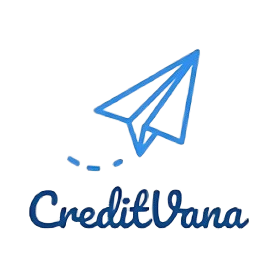As economic pressures mount, more Americans are turning to credit cards not for luxuries, but to cover everyday essentials. A recent report from VantageScore reveals that the average credit card balance has climbed to $6,500 — a clear warning sign that many households are reaching their financial limits.
This isn’t just about increased spending. It’s about survival.
🔥 Credit Utilization Is Spiking — And That’s a Big Red Flag
One of the most concerning trends right now? Credit utilization rates have surged past 30%, the threshold where lenders start to see borrowers as higher risk.
Why it matters: Credit utilization — the amount of available credit you’re using — is a major factor in your credit score. When it creeps above 30%, not only does your score suffer, but it’s often a sign you’re relying on credit to cover essential expenses like rent, groceries, or medical bills.
If this sounds familiar, you’re not alone. But the key now is to take control before the debt becomes unmanageable.
💳 What’s the Average Credit Card Debt in 2025?
According to VantageScore:
-
Average balance (August 2025): $6,500
-
That’s a $96 increase year-over-year
-
And a $67 jump in just one month
With average APRs over 21%, credit card debt compounds daily. That means even minimum payments may not be enough to make a dent — and balances can snowball fast.
✅ 4 Proven Ways to Pay Off Credit Card Debt Faster
If your balances are climbing or you’re struggling to keep up, here are four effective ways to break free from high-interest credit card debt:
1. Cut Your Interest with a Debt Consolidation Loan
A debt consolidation loan combines all your credit card debt into a single monthly payment — usually with a lower fixed interest rate. This approach simplifies your finances and can save you hundreds (or even thousands) in interest over time.
✅ Best for: Those with fair-to-good credit and multiple credit card balances
💡 Tip: Shop for personal loans with an APR below your average credit card rate to truly save.
2. Pay 0% Interest with a Balance Transfer Card
If you’ve got strong credit, consider a 0% APR balance transfer card. These cards offer interest-free repayment periods for 12–21 months, giving you a chance to pay down your balance without racking up more interest.
✅ Best for: Borrowers with good credit and a solid plan to pay off debt within the promo period
⚠️ Watch out for: Balance transfer fees (typically 3–5%) and high post-promo interest rates
3. Negotiate Your Way Out with Debt Settlement
If you’ve fallen behind on payments and can’t catch up, debt settlement might be an option. This involves negotiating with your creditors to accept less than what you owe — often through a lump-sum payment.
✅ Best for: Those in serious financial hardship, behind on multiple accounts
⚠️ Downside: Potential credit score damage and tax implications on forgiven debt
4. Get Professional Help Through Credit Counseling
A certified credit counseling agency can help you set up a Debt Management Plan (DMP) — which consolidates your payments, possibly lowers your interest rates, and gives you a roadmap to becoming debt-free in 3–5 years.
✅ Best for: People who want a structured payoff plan with expert support
💡 Note: You’ll typically need to close your credit card accounts while in the program
💬 Bottom Line: Don’t Wait — Start Tackling Your Debt Today
Rising credit card balances and high utilization rates are clear signs that many Americans are financially stretched. But waiting only makes things worse. The sooner you act, the more control you’ll have — and the less interest you’ll pay.
Whether you choose debt consolidation, a 0% balance transfer, debt settlement, or a credit counseling plan, what matters most is taking the first step now.
🎯 Remember: Credit card debt doesn’t solve itself — but with the right strategy, you can turn the tide and start building real financial freedom.
🧠 Smart Next Steps from CreditVana
-
🎯 Check your credit score to understand what options are available to you
-
💸 Compare debt consolidation loans with lower APRs
-
📉 Explore balance transfer cards with long 0% promo periods
-
👩💼 Connect with a credit counselor for a personalized action plan

